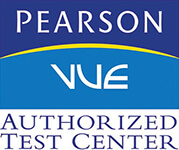What Is Health Information Technology?
What Is Health Information Technology?
Health Information Technology (HIT) is a relatively new field in IT management, and it will revolutionize recordkeeping in medical institutions. There are specific benefits that will come with this new technology. These benefits include more efficient service delivery in hospitals and clinics. Medical records are also more secure with HIT than with manual recordkeeping. More importantly, the adoption of HIT leads to a marked decrease in hospital costs. This is because HIT comes with low costs in terms of labor and record maintenance. Understanding HIT iscomplicated, but here is a brief overview of this system.
Definition of Concepts in HIT
There are two main concepts in HIT: information and technology. Information in HIT refers to the data collected by doctors and administrative personnel. This data includes medical diagnoses, procedures and expenses. It also includes any information shared by doctors among themselves or with administrative personnel.
Technology in HIT is the system through which medical institutions funnel this information. This system makes the information useful, credible and easy to interpret. It collates, processes, records and then stores the information. Doctors, administrative personnel and even patients can then retrieve relevant information from this system at any time.
The Implementation of HIT
Many countries are yet to adopt Health Information Technology. Only three countries in the world, Britain, Canada and the United States, extensively use HIT in their medical institutions. The slow uptake of HIT is because of the sensitive nature of medical records. This sensitive nature leads to the emergence of various concerns such as privacy, back up security and safety from hackers. The United States was able to fast track the implementation of HIT through political goodwill. President Bush signed the President’s Health Information Technology Plan in 2004 while President Obama signed the American Recovery and Reinvestment Act in 2009. The former paved the way for a ten year HIT implementation plan in the US while the latter availed more than $19 billion to the healthcare system to expedite the implementation process.
Types of HIT
There are two main types of HIT i.e. Electronic Medical Records (EMR) and Computerized Physician Order Entry (CPOE). EMR stores data such as tests, procedures and drug prescriptions. It is useful when it comes to disease management. This is because doctors can view developments in their patients’ health quite easily through this system. EMR also makes it easy for medical institutions to share records among themselves. This saves time by cutting bureaucratic red tape that usually comes with manual records. The primary goal of CPOE is to reduce prescribing errors. Reports indicate that CPOE can reduce medical errors by as much as 80%.
The Opportunities and Challenges
The introduction of technology leads to a set of unique opportunities and challenges. HIT is no exception. For example,HIT provides us the opportunity to explore a green solution when it comes to recordkeeping within the health sector. We no longer need volumes of paper to store information when we can easily do so on a single system. There are also challenges that come with this system. These challenges include data entry errors,nonstandard abbreviations and computer malfunctions. Thoseimplementing or using HIT need to be aware of these challenges as they go about their work.







